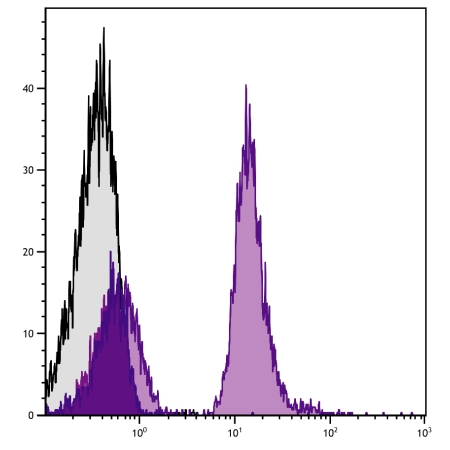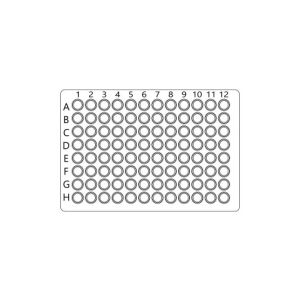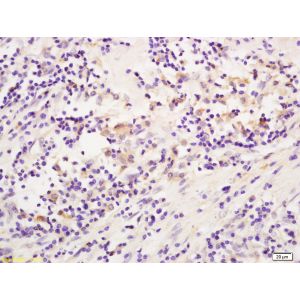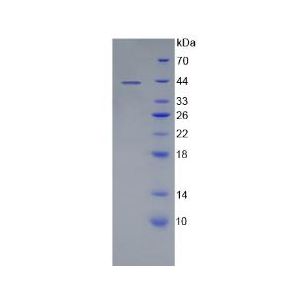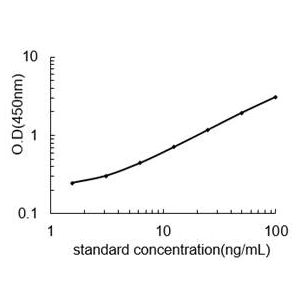Mouse CD19 Antibody : APC/CY7
Referência OASB00362
Tamanho : 0.1mg
Marca : Aviva Systems Biology
| Datasheets/Manuals | Printable datasheet for Mouse CD19 Antibody : APC/CY7 (OASB00362) |
|---|
| Tested Species Reactivity | Mouse |
|---|---|
| Predicted Species Reactivity | Mouse |
| Clonality | Monoclonal |
| Clone | MB19-1 |
| Isotype | IgA |
| Host | Mouse |
| Conjugation | APC-Cyanine 7 |
| Application | FC |
| Additional Information | Description: CD19 is a monomeric transmembrane glycoprotein expressed at relatively constant levels throughout B cell development from early pro-B/pre-B cells (i.e. B220+/CD43+/HSA+) through fully differentiated B cell stages. Terminally differentiated plasma cells do not express CD19. In humans, the CD19 molecule on the surface of mature B cells associates with CD21 (CR-2) and CD81 (TAPA-1), and this multimolecular complex synergizes with surface immunoglobulin to provide signal transduction and promote cellular activation. All splenic and peritoneal IgM+ cells of both B-1 and B-2 lineages are CD19+, with B-1 cells expressing higher levels of CD19 than B-2 cells in these sites. Studies with CD19-deficient mice have suggested that this molecule may not be required for normal generation and maturation of B cells in the bone marrow. |
| Reconstitution and Storage | Store at 2-8C |
| Immunogen | CD19+ mouse pre-B cell line 300.19 |
| Concentration | 0.1 mg/mL |
| Specificity | CD19 |
| Characterization | To ensure lot- to- lot consistency, each batch of monoclonal antibody is tested by flow cytometry to conformto characteristics of a standard reference reagent. |
| Warning | Reagents contain sodium azide. Sodium azide is very toxic if ingested or inhaled. Avoid contact withskin, eyes, or clothing. Wear eye or face protection when handling. If skin or eye contact occurs, washwith copious amounts of water. If ingested or inhaled, contact a physician immediately. Sodium azideyields toxic hydrazoic acid under acidic conditions. Dilute azide- containing compounds in running waterbefore discarding to avoid accumulation of potentially explosive deposits in lead or copper plumbing. |
| Dilution | Flow Cytometry: Fluorescein conjugate <= 1 ug/106 cells Biotin conjugate <= 1 ug/106 cells R-phycoerythrin conjugate Allophycocyanin conjugate Spectral Red conjugate R-phycoerythrin-Cyanine 5.5 conjugate APC-CY5.5 and APC-CY7 conjugates <= 0.2 ug/106 cells <= 0.2 ug/106 cells <= 0.2 ug/106 cells <= 0.2 ug/106 cells <= 0.2 ug/106 cells |
| Application Info | Flow cytometry 1-9, Immunoprecipitation 1 |
| Other Applications Data | Since applications vary, investigators are advised to determine the optimum working dilution for the product that is appropriate for a specific use. |
| Storage | - The purified (UNLB) antibody is supplied as 0.5 mg of purified immunoglobulin in 1.0 mL of 100 mMborate buffered saline, pH 8.2. No preservatives or amine- containing buffer salts added. Store at 2- 8 C - The fluorescein (FITC) conjugate is supplied as 0.5 mg in 1.0 mL of PBS/NaN3. Store at 2- 8 C - The biotin (BIOT) conjugate is supplied as 0.5 mg in 1.0 mL of PBS/NaN3. Store at 2- 8 C - The R- phycoerythrin (R- PE) and allophycocyanin (APC) conjugates are supplied as 0.1 mg in 1.0 mLof PBS/NaN3 and a stabilizing agent. Store at 2- 8 C. Do not freeze! - The Spectral Red (SPRD), R- phycoerythrin- Cyanine 5.5 (R- PE- CY 5.5), Allophycocyanin- Cyanine5.5 (APC- CY 5.5), and Allophycocyanin- Cyanine 7 (APC- CY 7) conjugates are supplied as 0.1 mgin 1.0 mL of PBS/NaN3 and a stabilizing agent. Store at 2- 8 C. Do not freeze! - Protect conjugated forms from light. Each reagent is stable for the period shown on the bottle label ifstored as directed. |
| Reference | 1. Sato, S., N. Ono, D.A. Steeber, D.S. Pisetsky, and T.F. Tedder. 1996. J. Immunol. 157:4371- 4378 2. Krop, I., A.R. Fougerolles, R.R. Hardy, M. Allison, M.S. Schlissel, and D.T. Fearon. 1996. Eur. J. Immunol. 26:238 3. Krop, I., A.L. Shaffer, D.T. Fearon, and M.S. Schlissel. 1996. J. Immunol. 157:48 4. Fearon, D.T. 1993. Curr. Opin. in Immunol. 5:341 5. Tedder, T.F., L.- J. Zhou, and P. Engel. 1994. Immunol. Today 15:437 6. Rickert, R.C., K. Rajewsky, and J. Roes. 1995. Nature 376:352 7. Engel, P., L.- J. Zhou, D.C. Ord, S. Sato, B. Koller, and T.F. Tedder. 1995. Immunity 3:39 8. Rolink, A., E. ten Boekel, F. Melchers, D.T. Fearon, I. Krop, and J. Andersson. 1996. J. Exp. Med. 183:187 9. Sato, S., M. Hasegawa, M. Fujimoto, T.F. Tedder and K. Takehara. 2000. J. Immunol. 165:6635- 6643. |
|---|---|
| Gene Symbol | CD19 |
| Gene Full Name | B-lymphocyte antigen CD19 |
| Alias Symbols | AW495831 |
| NCBI Gene Id | 12478 |
| Protein Name | B-lymphocyte antigen CD19 |
| Uniprot ID | P25918 |
| Protein Accession # | NP_033974.2 |
| Nucleotide Accession # | NM_009844.2 |




